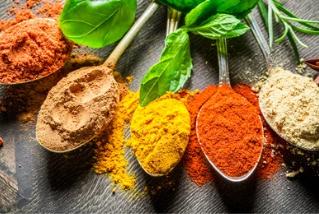Tea as a healthy drink, in addition to quenching thirst and clearing the throat and lungs, also has many health functions. Drinking more tea is beneficial and harmless to the body, which is why tea has been so popular for thousands of years. Pure tea is made only from the leaves of the tea plant and contains no additives, and many herbal tea blends, as well as some flavored teas, are also made from whole ingredients only. However, commercial products sold in the form of tea may contain various additives. In addition to intentionally added additives, tea may also contain contaminants that inadvertently enter the finished product. Therefore, the development of accurate and sensitive methods for the determination of tea additives is critical to tea safety.

International standards require strict control over the safety and quality of tea, especially coloring, and additives. As a recognized leader in tea testing, Lifeasible can help you develop the best tea additive testing solution to comply with local, national, and international regulations, including detecting artificial colors, and sulfur dioxide in tea.
Tea, herbal teas, and related blends are relatively additive-free, and most common additives are safe, but occasionally there are concerns about contaminants or other unlabeled additives. Some additives, such as citric acid, unwanted sweeteners, or natural and artificial flavors, can produce undesirable flavor profiles and/or be used to mask inferior ingredients. Our team of experienced scientists will work closely with you to find simple and reliable analytical solutions for identifying specific additives in tea. We can test for the following types of tea additives:
| Tea Additive Testing Items | Tea Additive Usage | Tea Additive Testing Methods |
|---|---|---|
| Artificial pigments: lead chromium green, lemon yellow, amaranth red, carmine, sunset red, bright blue, erythrosine, etc. | Adding pigment in tea will make the original color ugly and poor quality tea color become bright and shiny good appearance and good sales. |
|
| Flavors | Adding flavoring to tea can cover up the original strange taste of spoiled tea and improve the aroma of low-end tea. | |
| Talcum powder or paraffin wax | Both of these substances can increase the brightness of the tea. | |
| White sugar | White sugar can adjust the taste of the tea leaves, making the tea leaves that are originally bitter and hard to taste sweet, and also increase the profit of the tea. |
Lifeasible aims to provide efficient and reliable techniques to analyze various additives in tea. Our efficient customer-focused service will guarantee the quality of your results and save you time and money. If you are interested in our solutions, please contact us for technical consultation and quotation.
Lifeasible has established a one-stop service platform for plants. In addition to obtaining customized solutions for plant genetic engineering, customers can also conduct follow-up analysis and research on plants through our analysis platform. The analytical services we provide include but are not limited to the following:
STU-CRISPR System Improves Plant Genome Editing Efficiency
April 19, 2024
Application of Exosomes in Facial Beauty
April 12, 2024